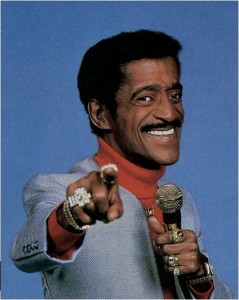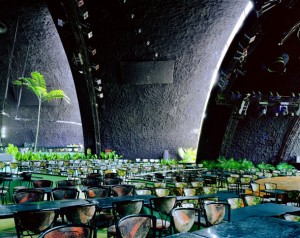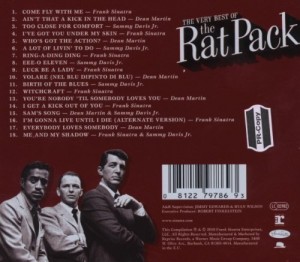 Samuel “Sammy” George Davis, Jr. (December 8, 1925 – May 16, 1990) was an American entertainer. Primarily a dancer and singer, he was also an actor of stage and screen, musician, and impressionist, noted for his impersonations of actors, musicians and other celebrities, he was born in the Harlem section of Manhattan in New York City, as an only child, to Sammy Davis, Sr., a black entertainer, and Elvira Sanchez, a tap Afro-Cuban dancer, whose mother was born in Havana, Cuba. In his 2003 biography In Black and White, author Wil Haygood writes that Davis, Jr.’s mother was born in New York City, Afro-Cuban mother and African-American father, and that Davis, Jr. claimed she was Puerto Rican because he feared anti-Cuban backlash would hurt his record sales.
Samuel “Sammy” George Davis, Jr. (December 8, 1925 – May 16, 1990) was an American entertainer. Primarily a dancer and singer, he was also an actor of stage and screen, musician, and impressionist, noted for his impersonations of actors, musicians and other celebrities, he was born in the Harlem section of Manhattan in New York City, as an only child, to Sammy Davis, Sr., a black entertainer, and Elvira Sanchez, a tap Afro-Cuban dancer, whose mother was born in Havana, Cuba. In his 2003 biography In Black and White, author Wil Haygood writes that Davis, Jr.’s mother was born in New York City, Afro-Cuban mother and African-American father, and that Davis, Jr. claimed she was Puerto Rican because he feared anti-Cuban backlash would hurt his record sales.
At the age of three Davis began his career in vaudeville with his father and Will Mastin as the Will Mastin Trio, which toured nationally. After military service Davis returned to the trio. Davis became an overnight sensation following a nightclub performance at Ciro’s after the 1951 Academy Awards. With the trio, he became a recording artist. In 1954, he lost his left eye in an automobile accident, and several years later, he converted to Judaism. Davis’s film career began as a child in 1933.
In 1956 Martín Fox, the owner of world most famous nightclub El Tropicana de la Habana arranged a special Club Tropicana tourist package: Cubana ‘ Tropicana Special began a round-trip that ferried club customers from Miami to the Tropicana and returned them to Florida at 4am the following morning. The plane featured a wet bar stocked with a bevy of cocktail selections, as well as a scaled-down version of Armando Romeu’s orchestra for anyone brave enough to dance in the aisles.
http://youtu.be/rbLlCxK0pHY
The club soon became “a magnet for international celebrities, musicians, beautiful women, and gangsters.”.The long list of stars who flocked to the Tropicana included Édith Piaf, Ernest Hemingway, Jimmy Durante, Pier Angeli, Maurice Chevalier, Sammy Davis, Jr. and Marlon Brando.
In 1960, he appeared in the first Rat Pack film, Ocean’s 11. After a starring role on Broadway in 1956’s Mr Wonderful, Davis returned to the stage in 1964’s Golden Boy, and in 1966 had his own TV variety show, The Sammy Davis Jr. Show. Davis’s career slowed in the late 1960s, but he had a hit record with “The Candy Man” in 1972 and became a star in Las Vegas, earning him the nickname “Mister Show Business”.
Davis became a member of the famous Rat Pack, led by his friend Frank Sinatra, which included fellow performers Dean Martin, Joey Bishop, and Peter Lawford, a brother-in-law of John F. Kennedy. Initially, Sinatra called the gathering “the Clan”, but Davis voiced his opposition, saying that it reminded people of the Ku Klux Klan. Sinatra renamed the group “the Summit”, but the media referred to them as the Rat Pack, the name of its earlier incarnation led by Humphrey Bogart and Lauren Bacall. The group made several movies together, including the original version of Ocean’s Eleven (1960), Sergeants Three (1962), and Robin and the Seven Hoods (1964), as well as many joint stage appearances in Las Vegas and elsewhere.
On December 11, 1967, NBC broadcast a musical-variety special entitled Movin’ With Nancy. In addition to the Emmy Award-winning musical performances, the show is notable for Nancy Sinatra, daughter of Frank Sinatra, and Sammy Davis, Jr., greeting each other with a kiss, one of the first black-white kisses in U.S. television history.
Davis had a friendship with Elvis Presley in the late 1960s, as they both were top-draw acts in Vegas at the same time. Davis was in many ways just as reclusive during his hotel gigs as Elvis, holding parties mainly in his penthouse suite, and Elvis went to them occasionally. Davis sang a version of Presley’s song “In The Ghetto” and made a cameo appearance in Presley’s concert film Elvis: That’s the Way It Is. One year later, he made a cameo appearance in the James Bond film Diamonds Are Forever, but the scene was cut.
In Japan, Davis appeared in television commercials for coffee, and in the United States, he joined Sinatra and Martin in a radio commercial for a Chicago car dealership.
In May 27–28, 1973 Davis hosted (with Monte Hall) the first annual, twenty-hour Highway Safety Foundation telethon. Guests included Muhammad Ali, Paul Anka, Jack Barry, Dr. Joyce Brothers, Ray Charles, Dick Clark, Roy Clark, Howard Cosell, Ossie Davis, Ruby Dee, Joe Franklin, Cliff Gorman, Richie Havens, Danny Kaye, Steve Leeds, Jerry Lewis, Hal Linden, Rich Little, Butterfly McQueen, Minnie Pearl, Boots Randolph, Tex Ritter, Phil Rizzuto, The Rockettes, Nipsy Russell, Sally Struthers, Mel Tillis, Ben Vereen, Lawrence Welk, and many more. It was a financial disaster. The total amount of pledges was $1.2 million. Actual pledges received were $525,000.
Davis died in Beverly Hills, California, on May 16, 1990, of complications from throat cancer. Earlier, when he was told that surgery (laryngectomy) offered him the best chance of survival, Davis replied he would rather keep his voice than have a part of his throat removed; he subsequently was treated with a combination of chemotherapy and radiation. However, a few weeks prior to his death his entire larynx was removed during surgery. He was interred in the Forest Lawn Memorial Park in Glendale, California, next to his father and Will Mastin.
http://youtu.be/5voM2HExV_Q
On May 18, 1990, two days after Davis’s death, the neon lights of the Las Vegas Strip were darkened for ten minutes as a tribute to him. He was survived by his spouse, his daughter, his sons, his sister, his mother Elvira and his cuban grandmother.
Agencies/Various/InternetPhotos/YouTube/TheCubanHistory.com
The Cuban History, Hollywood.
Arnoldo Varona, Editor.



 Sammy Davis Jr., singer, entertainer. (Cuban descendant) ** SAMMY DAVIS Jr., cantante. (Descendiente cubano)
Sammy Davis Jr., singer, entertainer. (Cuban descendant) ** SAMMY DAVIS Jr., cantante. (Descendiente cubano)


